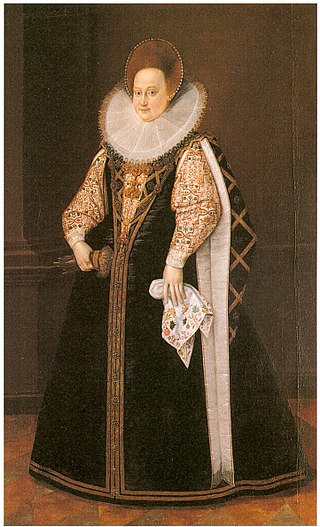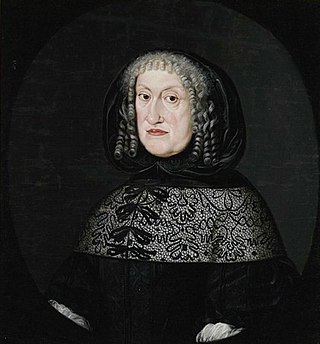
Gernrode is a historic town and former municipality in the Harz District, in Saxony-Anhalt, Germany. Since 1 January 2014, it has been part of Quedlinburg. It was the seat of the former Verwaltungsgemeinschaft of Gernrode/Harz.

Gernrode Abbey was a house of secular canonesses (Frauenstift) in Gernrode in what is now Saxony-Anhalt, Germany. Gernrode was founded in 959 and was disestablished in the seventeenth century. In the Middle Ages the abbey was an Imperial abbey, which had the status of imperial immediacy, and an Imperial State. In the early modern period, the abbey was part of the Upper Saxon Circle.

John V of Anhalt-Zerbst, was a German prince of the House of Ascania and ruler of the principality of Anhalt-Dessau. From 1544, he assumed rule of the re-created principality of Anhalt-Zerbst.

Joachim Ernest of Anhalt, was a German prince of the House of Ascania, ruler of the principality of Anhalt-Zerbst from 1551, and from 1570 sole ruler of all the Anhalt lands.

Sibylla of Anhalt was a German princess from the House of Ascania who became Duchess of Württemberg as the wife of Duke Frederick I.

Anna Maria of Anhalt, was by birth a member of the House of Ascania and a princess of Anhalt. After her marriage, she was Duchess of Legnica-Brzeg-Oława-Wołów.

Elisabeth of Anhalt-Zerbst was Electress of Brandenburg by marriage to John George, Elector of Brandenburg.

Henrietta Catherine Agnes of Anhalt-Dessau was a princess of Anhalt-Dessau by birth, Dean of Herford Abbey and by marriage Baroness of Loën.

Margaret of Brandenburg was a Princess of Brandenburg by birth and by marrying first a duke of Pomerania and later a prince of Anhalt.

Agnes Hedwig of Anhalt was a Princess of Anhalt by birth, an Abbess of Gernrode, and by marriage Electress of Saxony and later Duchess of Schleswig-Holstein-Sonderburg.

Eleonore of Anhalt-Zerbst was a member of the House of Ascania and a princess of Anhalt-Zerbst by birth and by marriage Duchess of Schleswig-Holstein-Sonderburg-Norburg.

Elisabeth of Saxony was a Saxon princess, and Countess Palatine of Simmern by marriage to John Casimir of the Palatinate-Simmern.

Agnes of Brandenburg was a Princess of Brandenburg by birth and by marriage successively Duchess of Pomerania and of Saxe-Lauenburg.

Louise Elisabeth of Württemberg-Oels, was a Duchess of Württemberg-Oels by birth and by marriage Duchess of Saxe-Merseburg-Lauchstädt. In 1709, she revived the Ducal Württemberg-Oels Order of the Skull as a chivalric order for ladies.

Elisabeth Albertine of Anhalt-Dessau, was a German noblewoman by birth Princess of Anhalt-Dessau as member of the House of Ascania and by marriage Duchess of Saxe-Weissenfels-Barby.

Hazecha of Ballenstedt was a member of the House of Ascania, and the third abbess of Gernrode (r.1044-1063).

Sophia of Saxony was a member of the House of Ascania, and the abbess of Gernrode (r.1220–1244).

Oda of Meinersen was the abbess of Gernrode (r.1248-1260).

Sophie Elisabeth of Anhalt-Dessau was a German princess of the House of Ascania. She was the last abbess of Gernrode (r.1593-1614). After leaving the abbey, Sophie Elisabeth married George Rudolf of Liegnitz and was duchess of Liegnitz until her death in 1620.


















